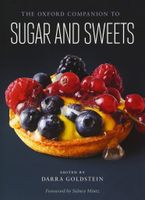Save 25% on ckbk Premium Membership with code FALLFLAVORS 🍁
The Sugar Revolution
Published 2015
Richard Ligon was among those who set out for the region in 1647. His True and Exact History of The Island of Barbados, published in 1650, details early sugar production on the island. It may also be the first work in the English language to describe rum and its effects. The process of refining sugar was simple and remained relatively unchanged since ancient times. The raw cane was crushed in wind- or water-driven mills, and the resulting liquid—the trash called bagasse—was removed and used to fire the burners that heated the cane juice. The heated juice was clarified with a small amount of lime, and then ladled into copper boiling pans of successively smaller size, each over increasingly higher heat. Once the syrup reached the last boiling pan, it was allowed to evaporate until reduced to a thick syrup. This syrup was allowed to cool and was then further cooled in troughs before being poured into large casks or hogsheads that were perforated in the bottom to allow the molasses to drip out. This process was called the Jamaica Train method. Byproducts of sugar production were molasses, which could be reboiled after having dripped from the hogshead, and rum, which was prepared from the first skimmings of the copper pans or made from molasses. Both became valuable commodities in themselves. See molasses and rum. The raw sugar and molasses were shipped off to the mother countries in Europe, where the raw sugar was further refined, thus guaranteeing economic and political control over the colonies that produced the sugar.
Become a Premium Member to access this page
Unlimited, ad-free access to hundreds of the world’s best cookbooks
Over 160,000 recipes with thousands more added every month
Recommended by leading chefs and food writers
Powerful search filters to match your tastes
Create collections and add reviews or private notes to any recipe
Swipe to browse each cookbook from cover-to-cover
Manage your subscription via the My Membership page
Part of
Advertisement
Related Recipes
-
-
-
-
Related Reference
-
-
-
-
Advertisement



